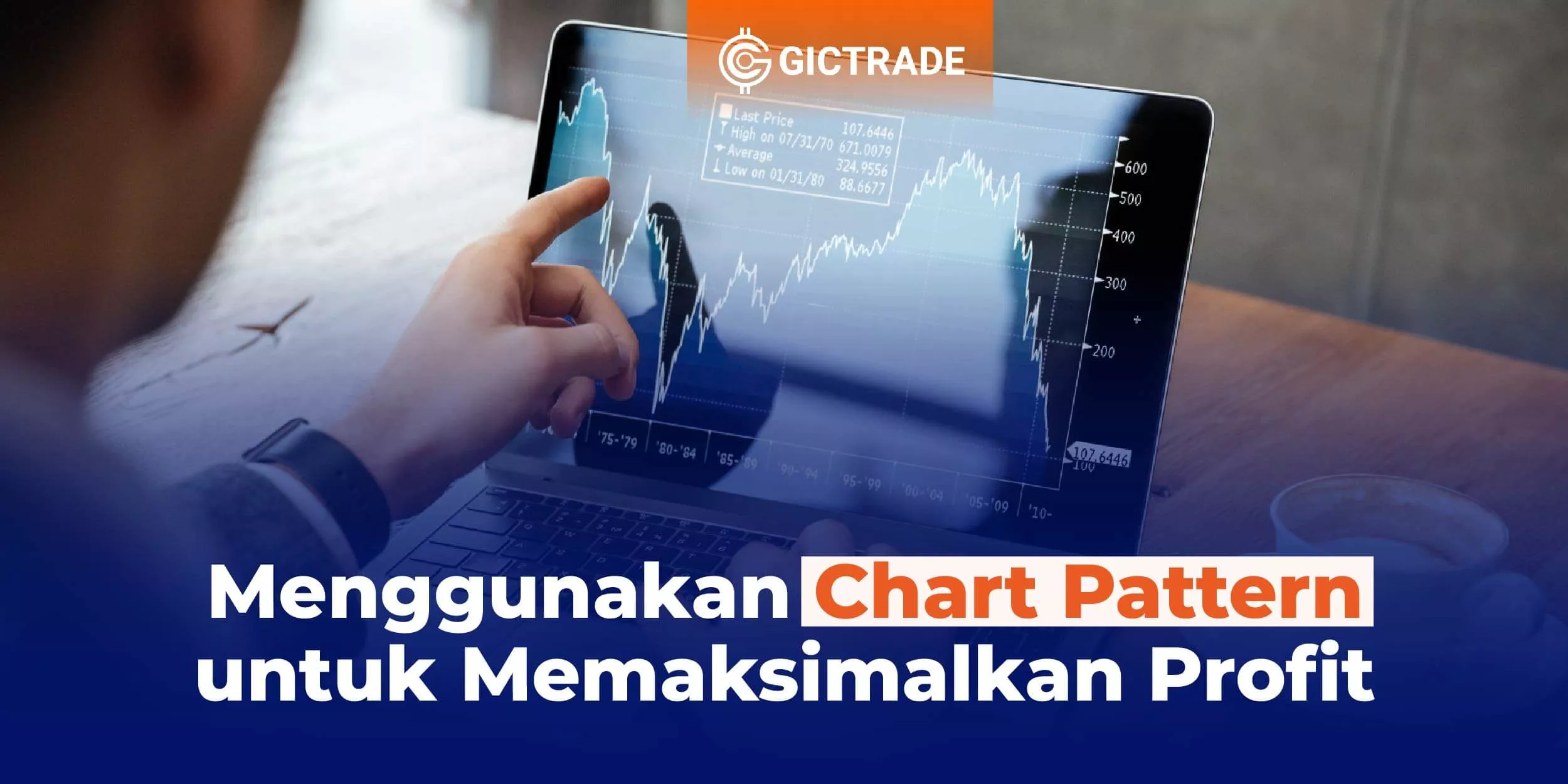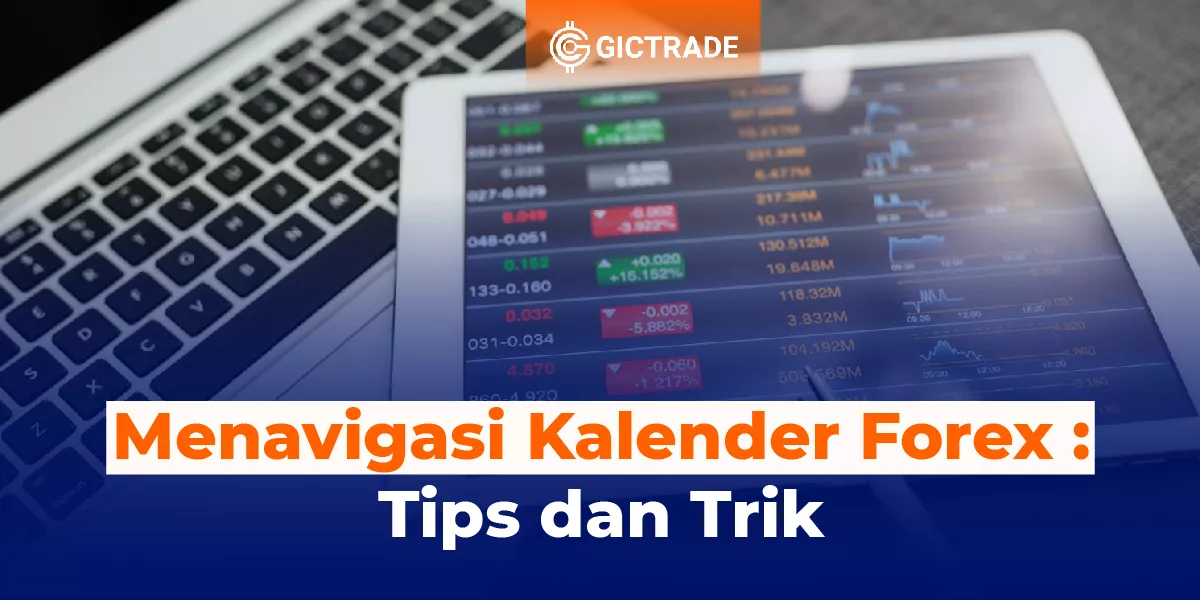Using chart patterns can be a very effective method in predicting price movements in the financial markets. In this article, we will discuss how to use chart patterns to maximize your profits in the financial markets. We will learn what chart patterns are, the types of chart patterns, and how to use chart patterns to make profits in trading.
.webp)
Table of Contents
What is Chart Pattern?
Before learning more about how to use a pattern chart, it's important to understand what a pattern chart is. Chart patterns are patterns formed on the price chart of stocks or other assets in the financial market. These patterns can be used to predict the direction of future price movements.
Types of Chart Patterns
There are many types of chart patterns that can be found in the financial markets. Some of the most common chart pattern types are as follows:
1. Head and Shoulders
Head and Shoulders pattern is a trend reversal pattern consisting of three peaks, with the middle peak (shoulder) lower than the other peaks (head). Basically, this pattern indicates that the buying pressure on the asset has begun to weaken and will soon be followed by stronger selling pressure.
Identifying the Head and Shoulders Pattern
To identify the Head and Shoulders pattern, you need to look for three peaks that form around the same level, with the middle peak (shoulder) lower than the other peaks (head). The neckline can be drawn below the level that connects the lowest points between the peaks.
Using the Head and Shoulders Pattern
The Head and Shoulders pattern can be used to identify entry and exit points in the market. Once the Head and Shoulders pattern is confirmed, traders can open a short position below the neckline with a profit target as far as the distance between the neckline and the top of the head is concerned.
Head and Shoulders Pattern Confirmation
To ensure the validity of the Head and Shoulders pattern, traders need to confirm by waiting for the price to break through the neckline. Once the neckline is breached, the trader can open a short position with a profit target calculated based on the distance between the neckline and the top of the head. However, keep in mind that not all Head and Shoulders patterns will work. There is a chance that this pattern fails and the price continues the uptrend. Therefore, traders need to pay attention to the signs of pattern failure, such as price failing to break the neckline or price returning to rise after breaking the neckline.
2. Double Top and Double Bottom
Double Top and Double Bottom pattern is a trend reversal pattern consisting of two parallel peaks or valleys. A Double Top pattern is formed when the price reaches a certain level twice and fails to break it, while a Double Bottom pattern is formed when the price reaches a certain level twice and manages to break it.
Identifying Double Top and Double Bottom Patterns
To identify the Double Top and Double Bottom patterns, traders need to look for two peaks or valleys that are parallel to the same level. The neckline can be drawn above the level connecting the highs in the Double Top pattern and below the level connecting the lows in the Double Bottom pattern.
Using the Double Top and Double Bottom Pattern
Double Top dan Double Bottom pattern It can be used to identify entry and exit points in the market. Once the Double Top pattern is confirmed, traders can open a short position with a profit target as far as the distance between the neckline and the support level has been breached. Meanwhile, once the Double Bottom pattern is confirmed, traders can open a long position with a profit target as far as the distance between the neckline and the resistance level has been broken.
Double Top and Double Bottom Pattern Confirmation
To ensure the validity of the Double Top and Double Bottom patterns, traders need to confirm by waiting for the price to break through the neckline. Once the neckline is breached, traders can open a position with a profit target calculated based on the distance between the neckline and the support or resistance level that has been breached. However, as is the case with other patterns, not all Double Top and Double Bottom patterns will work. There is a chance that this pattern fails and the price continues its upward or downward trend. Therefore, traders need to pay attention to the signs of pattern failure, such as price failing to break the neckline or price returning to rise or fall after breaking the neckline. By understanding the Double Top and Double Bottom patterns and confirming them correctly, traders can take advantage of these patterns to maximize profits and minimize risks.
3. Triangle
Triangle It consists of two trend lines that move towards a single point. There are three types of triangles, namely symmetrical triangle, ascending triangle, and descending triangle. This pattern signals market consolidation before the direction of price movement changes.
4. Flag and Pennant
Flag and pennant is a chart pattern pattern that forms after a strong price movement. The flag looks like a flat triangle stretching between two trend lines. Pennant looks like a small triangle indicating consolidation. This pattern signals a strong trend continuation.
5. Cup and Handle
Cup and handle is a chart pattern pattern that shows a reversal of direction from bearish to bullish. This pattern consists of two parts, namely a cup and a handle. This pattern indicates that the price is in an accumulation phase before rising.
Want to Get Maximum Profit Fast? Join GICTrade Now!
Unlike other conventional brokerage firms, GIC through the GICTrade platform provides a solution for traders who do not want to be charged with high trading fees. GICTrade is a peer-to-peer trading platform that brings together traders and market makers.
So, what is special about GICTrade? As a platform that brings together traders and market makers, you as a potential customer can certainly choose between the two, namely becoming a trader or a market maker.
GICTrade's role as a transaction venue provider can minimize costs and help maximize profits for traders and market makers as well as create a fair transaction atmosphere and results.
Traders will benefit from the absence of commission fees and low swap fees and spreads due to the presence of market makers as liquidity providers. You can also join the trader community on GICtrade's Telegram to ask fellow traders directly about their trading experience.
Using Chart Patterns to Maximize Profits
Utilizing chart patterns in trading can help you to earn greater profits. Here are some tips for using chart patterns in trading:
1. Pattern Identification
The first step in using a chart pattern is to identify the pattern on the chart. Make sure you understand the types of patterns that exist and can identify patterns easily.
2. Pattern Confirmation
After identifying the pattern on the price chart, you need to confirm the pattern to ensure that it is valid and trustworthy. Pattern confirmation is done using some additional technical indicators and analysis. Some technical indicators that can be used to confirm patterns include:
1. Volume
The trading volume can be used to confirm the pattern. Patterns formed with high trading volume are considered more valid than patterns formed with low trading volume.
2. Moving Average
Moving averages can be used to confirm patterns. If the price is above the moving average, the pattern formed tends to be bullish. Conversely, if the price is below the moving average, the pattern formed tends to be bearish.
3. Oscillator
Oscillators such as the Relative Strength Index (RSI) and the Stochastic Oscillator can be used to confirm patterns. If the RSI or Stochastic Oscillator indicates an overbought or oversold condition, the pattern formed tends to be more valid. In addition to using technical indicators, you can also perform additional analysis to confirm patterns, such as:
1. Higher Timeframes
Looking at the higher timeframes can help you confirm the pattern. If a pattern formed on a lower timeframe is also seen on a higher timeframe, it tends to be more valid.
2. Pattern Position
The position of the pattern can also be used to confirm the pattern. If the pattern formed is at a strong support or resistance level, it tends to be more valid.
3. Other Patterns
Observing other patterns that form on the price chart can also help you confirm the pattern. If the pattern formed is also seen in other patterns, the pattern tends to be more valid. By confirming the pattern, you can ensure that it is valid and trustworthy so that you can make transactions with more confidence.
3. Entry Point and Stop Loss
After identifying and confirming the pattern, the next step is to determine the entry point and stop loss. An entry point is the price at which you enter the market, while a stop loss is the price at which you exit the market if the price movement moves against you.
4. Take Profit
In addition to determining the entry point and stop loss, you also need to determine the Take profit. Take profit is the price level at which you exit the market if the price movement moves according to your prediction and reaches the desired profit target.
5. Money Management
Lastly, you also need to pay attention to money management when using chart patterns in trading. Make sure you determine the risk per trade you can accept and set your sizing position accordingly.
|
Also Read : How to Use Chart Patterns in Technical Analysis |
FAQ
1. What is chart pattern?
Chart pattern are patterns that form on the price chart of stocks or other assets in the financial market. These patterns can be used to predict the direction of future price movements.
2. What are the types of chart patterns?
Some of the most common chart pattern types are head and shoulders, double top and double bottom, triangle, flag and pennant, and cup and handle.
3. How to use chart patterns in trading?
You can use chart patterns by identifying patterns, confirming patterns, determining entry points and stop losses, determining take profits, and paying attention to money management.
4. What are stop loss and take profit?
A stop loss is the price at which you exit the market if the price movement moves against you. Take profit is the price level at which you exit the market if the price movement moves according to your prediction and reaches the desired profit target.
5. What should be considered when using chart patterns in trading?
You need to pay attention to money management, determine the risk per trade you can accept, and set your sizing position accordingly.
6. Are chart patterns always accurate?
Not always. Chart patterns can give incorrect signals or give inaccurate signals in certain market conditions.| Also Read : How to Use Chart Patterns in Technical Analysis |
Conclusion
Using chart patterns can help you earn greater profits in trading in the financial markets. By understanding the types of chart patterns, identifying patterns, and confirming patterns, you can determine the right entry and stop loss points and determine the desired take profit targets. Also, make sure you pay attention to your money management and the risk per trade you can accept. Now that you've learned how to use chart patterns to maximize profits, start applying them in your trading and don't forget to keep learning and improving your trading skills.
 Last:
Last: 







